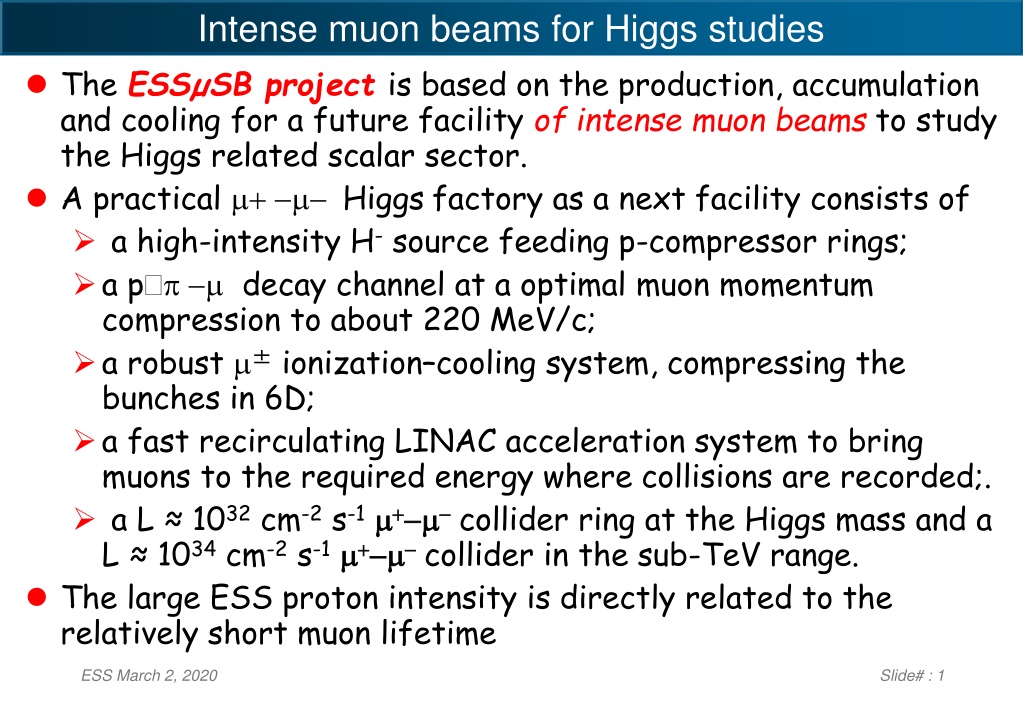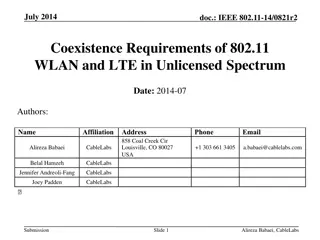Implications of Wrap-Around for TGax Scenarios
Investigating the use of Wrap-Around in TGax scenarios 3 and 4, highlighting simulation studies showing differences in system performance and the need to reconsider simulation parameters. Reviewing hexagonal BSS layouts and proposing solutions for refining deployment simulations.
Download Presentation

Please find below an Image/Link to download the presentation.
The content on the website is provided AS IS for your information and personal use only. It may not be sold, licensed, or shared on other websites without obtaining consent from the author.If you encounter any issues during the download, it is possible that the publisher has removed the file from their server.
You are allowed to download the files provided on this website for personal or commercial use, subject to the condition that they are used lawfully. All files are the property of their respective owners.
The content on the website is provided AS IS for your information and personal use only. It may not be sold, licensed, or shared on other websites without obtaining consent from the author.
E N D
Presentation Transcript
Intense muon beams for Higgs studies The ESS SB project is based on the production, accumulation and cooling for a future facility of intense muon beams to study the Higgs related scalar sector. A practical + Higgs factory as a next facility consists of a high-intensity H-source feeding p-compressor rings; a p decay channel at a optimal muon momentum compression to about 220 MeV/c; a robust ionization cooling system, compressing the bunches in 6D; a fast recirculating LINAC acceleration system to bring muons to the required energy where collisions are recorded;. a L 1032cm-2s-1 + + collider ring at the Higgs mass and a L 1034cm-2s-1 + + collider in the sub-TeV range. The large ESS proton intensity is directly related to the relatively short muon lifetime ESS March 2, 2020 Slide# : 1
ESS production at 2.0 GeV A GEANT4 simulation has been used for charged pion and kaon in a mercury target at the kinetic energy of 2.0 GeV. The 3.3 x 1014 p/pulse generate 3.85 x 1013 +/pulse and 2.64 x 1013 -/pulse in the forward direction with respect to the beam and a transverse momentum at production < 250 MeV/c. The peak of the momentum distributions is at about 120 MeV/c. . The are decaying with a mean lifetime of ct = 7.8 m, corresponding to path of 8.94 m at the most probable momentum of 160 MeV/c The have ct = 659.1 m, and the longer decay length of 1370 m at 220 MeV/c Uppsala_Feb_2016 Slide# : 2
The proton rings The rate of the ESS- LINAC may be doubled to 28 Hz. Two proton rings of 35 m radius, the Accumulator collects the LINAC pulse and the Compressor steers the bunch to 1.5 ns. The beam transfer from the LINAC to the Accumulator is performed by a multi-turn injection of negative [p+2e-] ions, stripped at the entrance of the Accumulator ring, either with a thin absorbing carbon foil or of an appropriate LASER beam. The pion spectrum produced by a given proton power (the number of protons inversely proportional to its energy) is nearly independent of proton kinetic energy between 8 and 20 GeV and a only a factor two lower for 2 GeV. P. Sala: prediction Yield ( /p/sr/GeV/GeV) Pion momentum 300 MeV/c VeniceF, March 2019 Slide# : 3
Accumilator and compressor rings for H- In order to make use of a 5 MWatt/pulse from the ESS and the requirement of 1.5 ns long proton pulses, 2 coupled rings (Accumulator and Compressor) may subdivide the beam pulse into four pulses and operate the secondary beam at 4 x 14 = 56 Hz and a 17.8 ms bunch rate. Rings have 35 m radius, wth 4 pulses of 120 ns each separated by 50 ns. ESS March 2, 2020 Slide# : 4























